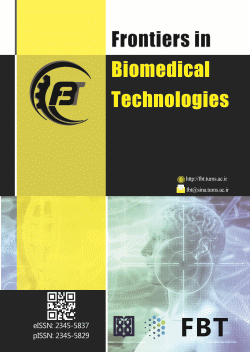Effectiveness of Contrast Agents and Molecular Indicators in Alzheimer's Diagnosis Through PET and SPECT Imaging on Animal Models
Abstract
Purpose: The importance of cognitive decline has increased due to an aging population and changing lifestyles. Currently, an absolute diagnosis of Alzheimer's disease (AD) can only be determined through postmortem histopathological examination, although in vivo imaging is making strides toward this diagnosis. Upon examining the postmortem brains of AD patients, the disease is associated with neuropathological features such as the accumulation of amyloid β (Aβ) plaques, also known as senile plaques and neurofibrillary tangles (NFT) of highly phosphorylated tau in the brain. Early detection and diagnosis of AD are crucial, but current research on the effectiveness of contrast agents and molecules is limited. To address this gap, we conducted a comprehensive study on PET and SPECT imaging to evaluate the role of these agents and indicators in diagnosing the disorder.
Materials and Methods: A comprehensive search was conducted in PubMed, using the PRISMA guidelines, without any time or language restrictions. Three independent researchers reviewed the studies based on criteria, and relevant data from the included articles were extracted and analyzed.
Results: As a result of the initial search, 172 original articles were included in the study. Finally, data from 116 studies were extracted. The most used contrast agents were [¹⁸F] fluorodeoxyglucose and its derivatives, [11C] acetate, and chemicals based on iodine, respectively. The most often employed transgenic mouse strains in the studies were APP/PS1, and 5XFAD. On average, 23 animals were used in each study. Respectively, Amyloid beta, Tau protein, Translocator protein (TSPO), Acetylcholinesterase (AChE), Monoamine oxidase B (MAO-B), and Gonadotropin-releasing hormone receptor (GnRHR) were identified the most as biomarkers in studies.
Conclusion: The study on PET and SPECT imaging for diagnosing AD has limitations, including the use of animal models and not evaluating the long-term effects or safety of contrast agents. Further research is needed to confirm these findings in clinical settings and assess the long-term impact of these contrast chemicals.
2. Gustavsson, Anders, Nicholas Norton, Thomas Fast, Lutz Frölich, Jean Georges, Drew Holzapfel, Tunahan Kirabali et al. "Global estimates on the number of persons across the Alzheimer's disease continuum." Alzheimer's & Dementia 19, no. 2 : 658-670, 2023.
3. Albert, Marilyn S., Steven T. DeKosky, Dennis Dickson, Bruno Dubois, Howard H. Feldman, Nick C. Fox, Anthony Gamst et al. "The diagnosis of mild cognitive impairment due to Alzheimer's disease: recommendations from the National Institute on Aging‐Alzheimer's Association workgroups on diagnostic guidelines for Alzheimer's disease." Alzheimer's & dementia 7, no. 3 : 270-279, 2011.
4. McKhann, Guy M., David S. Knopman, Howard Chertkow, Bradley T. Hyman, Clifford R. Jack Jr, Claudia H. Kawas, William E. Klunk et al. "The diagnosis of dementia due to Alzheimer’s disease: Recommendations from the National Institute on Aging-Alzheimer’s Association workgroups on diagnostic guidelines for Alzheimer's disease." Alzheimer's & dementia 7, no. 3 : 263-269, 2011.
5. Sperling, Reisa A., Paul S. Aisen, Laurel A. Beckett, David A. Bennett, Suzanne Craft, Anne M. Fagan, Takeshi Iwatsubo et al. "Toward defining the preclinical stages of Alzheimer’s disease: Recommendations from the National Institute on Aging-Alzheimer's Association workgroups on diagnostic guidelines for Alzheimer's disease." Alzheimer's & dementia 7, no. 3 : 280-292, 2011.
6. Farias, Sarah Tomaszewski, Dan Mungas, Bruce R. Reed, Danielle Harvey, and Charles DeCarli. "Progression of mild cognitive impairment to dementia in clinic-vs community-based cohorts." Archives of neurology 66, no. 9 : 1151-1157, 2009.
7. Alzheimer's Association. "2010 Alzheimer's disease facts and figures." Alzheimer's & dementia 6, no. 2 : 158-194, 2010.
8. Jack, Clifford R., David S. Knopman, William J. Jagust, Leslie M. Shaw, Paul S. Aisen, Michael W. Weiner, Ronald C. Petersen, and John Q. Trojanowski. "Hypothetical model of dynamic biomarkers of the Alzheimer's pathological cascade." The Lancet Neurology 9, no. 1: 119-128, 2010.
9. McKhann, Guy M., David S. Knopman, Howard Chertkow, Bradley T. Hyman, Clifford R. Jack Jr, Claudia H. Kawas, William E. Klunk et al. "The diagnosis of dementia due to Alzheimer’s disease: Recommendations from the National Institute on Aging-Alzheimer’s Association workgroups on diagnostic guidelines for Alzheimer's disease." Alzheimer's & dementia 7, no. 3 : 263-269, 2011.
10. Jack Jr, Clifford R. "Alzheimer disease: new concepts on its neurobiology and the clinical role imaging will play." Radiology 263, no. 2 : 344-361, 2012.
11. Valotassiou, Varvara, Greta Wozniak, Nikolaos Sifakis, Nikolaos Demakopoulos, and Panagiotis Georgoulias. "Radiopharmaceuticals in neurological and psychiatric disorders." Current Clinical Pharmacology 3, no. 2: 99-107, 2008.
12. Valotassiou, V., S. Archimandritis, N. Sifakis, J. Papatriantafyllou, and P. Georgoulias. "Alzheimer's disease: spect and pet tracers for beta-amyloid imaging." Current Alzheimer Research 7, no. 6: 477-486,2010.
13. Mier, Walter, and Daniela Mier. "Advantages in functional imaging of the brain." Frontiers in human neuroscience 9: 249, 2015.
14. Page MJ, McKenzie JE, Bossuyt PM, Boutron I, Hoffmann TC, Mulrow CD, et al. The PRISMA 2020 statement: an updated guideline for reporting systematic reviews. International journal of surgery,88:105906,2021.
| Files | ||
| Issue | Vol 12 No 1 (2025) | |
| Section | Literature (Narrative) Review(s) | |
| DOI | https://doi.org/10.18502/fbt.v12i1.17746 | |
| Keywords | ||
| Alzheimer's Disease Single Photon Emission Computed Tomography Positron Emission Tomography Contrast Agents Molecular Indicators | ||
| Rights and permissions | |

|
This work is licensed under a Creative Commons Attribution-NonCommercial 4.0 International License. |




